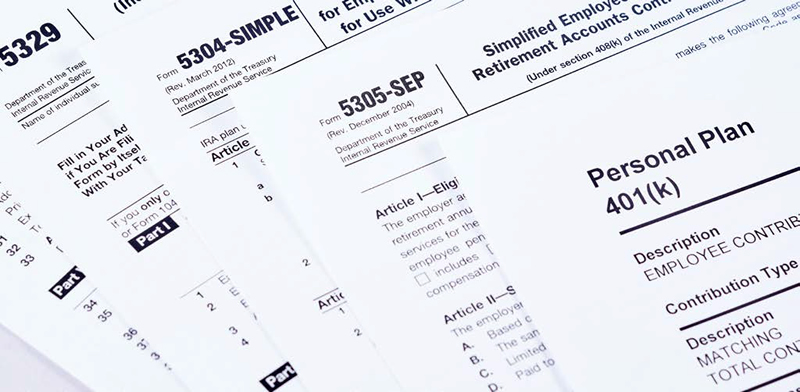
Carolyn Smith, John Hickman and Kyle Woods, Alston and Bird LLP
The spending legislation enacted into law Dec. 20, 2019, includes a package of retirement plan provisions known as the Setting Every Community Up For Retirement Enhancement Act Of 2019, or the SECURE Act. The overall goals of the SECURE Act are to expand access to retirement plans, increase retirement income security, expand retirement plan options for employers – particularly smaller employers – and ease plan administration. To achieve these goals, the SECURE Act includes a variety of provisions related to all types of retirement plans, including defined contribution plans, defined benefit plans and IRAs. The act also contains some provisions that may be less welcome, such as increases in penalties for failure to file Form 5500 for retirement plans and a reduction in the distribution options for inherited balances in defined contribution plans. This advisory provides a high-level overview of some key provisions in the act, focusing particularly on 401(k) and other defined contribution plan issues for small employers. Employers should consult with their own advisors as to what the SECURE Act means for their situation, including how the new provisions interact with other rules. For a discussion about the health benefits provisions included in the Dec. 20, 2019, spending legislation, see the January 2020 Aflac Federal Relations Advisory.

Note: Many SECURE Act provisions went into effect starting Jan. 1, 2020. The legislation includes a remedial amendment period that generally allows a delayed time period for making necessary plan amendments. However, the plan must be operated in accordance with applicable law, even if a delayed plan amendment period applies.
Tax credits for small businesses
One barrier small businesses face with respect to providing a retirement plan is the administrative costs associated with setting up a plan. The SECURE Act tries to address this issue through two tax credit provisions:
Increased credit for startup costs for a new retirement plan
The SECURE Act builds on a preexisting tax credit for startup costs associated with a new plan for a qualifying small employer. In general, a qualifying small employer is an employer with no more than 100 employees who received at least $5,000 in compensation in the prior year. The new plan must cover at least one employee who is not highly compensated. Details include:
New automatic enrollment credit
Automatic enrollment arrangements under which employees are automatically enrolled in a salary reduction 401(k) plan, unless they opt out, have shown to be effective in helping employees increase their retirement savings. The SECURE Act contains a new tax credit to encourage small employers to have an automatic enrollment feature in their 401(k) or similar plan. Details include:

Open Multiple Employer Plans (MEPs)
The SECURE Act expands retirement options, especially for small employers, by allowing employers with no other relationship (i.e., no common ownership or other industry or geographic relationship) to come together through a “pooled provider” in an open MEP. Open MEPs are expected to allow small employers to obtain more favorable pension investment results and administrative services that are more efficient and less expensive. The SECURE Act also eliminates what is commonly referred to as the “one bad apple rule” under which the failure of a MEP to meet applicable rules with respect to one employer could impact the entire plan. It is effective for plan years beginning after Dec. 31, 2020.
Provisions relating to 401(k) plans
Increased limit on automatic enrollment safe harbor cap
As noted above, automatic enrollment arrangements have shown to be effective at helping employees increase their retirement savings. To encourage the adoption of automatic enrollment arrangements, pre-SECURE Act law has provided a safe harbor from 401(k) nondiscrimination rules for certain automatic enrollment arrangements. Among other requirements, an automatic enrollment safe harbor plan must provide that:
Note: The maximum dollar limit on elective deferrals is not changed by the SECURE Act.

Simplified Simplified administration of 401(k) nonelective contribution safe harbor plans
Plans that use the nonelective safe harbor to satisfy the 401(k) plan nondiscrimination rules are no longer required to provide a safe harbor notice. However, the notice is still required for plans that qualify for the safe harbor based on matching contributions. For employers who want to adopt a nonelective safe harbor plan, the SECURE Act provides additional flexibility on when the plan needs to be amended to qualify. It is effective for plan years beginning after Dec. 31, 2019.
Required coverage of long-term part-time workers
As part of the goal of expanding access to retirement savings plans, the SECURE Act requires employers that offer a 401(k) plan to allow certain part-time workers to make elective deferrals under the plan. Under a new, additional eligibility rule, employees who are 21 or older and have at least 500 hours of service each year in three consecutive years must be allowed to participate in an employer’s 401(k) plan. The requirement applies only to eligibility to make employee deferrals. The employer is not required to provide any otherwise matching or nonelective contributions for employees who qualify under this rule, and such employees may be excluded from nondiscrimination testing and the application of the top-heavy rules. It is effective for plan years beginning after Dec. 31, 2020, and service performed by an employee in periods beginning before Jan. 1, 2021, is not taken into account in determining eligibility under this rule.

Provisions relating to retirement plan distributions and loans
Age increase for required minimum distributions
Prior to the SECURE Act, distributions from retirement plans and individual retirement arrangements (IRAs) were generally required to begin by age 70 ½. This age limit dates back several decades and does not reflect increases in life expectancy. To account for the fact that many individuals will live longer and may not need access to their retirement income until later, the SECURE Act increases the age for required minimum distributions from 70 ½ to 72. This change is effective for distributions after 2019 with respect to individuals who attain age 70 ½ after 2019. Individuals who reached 70 ½ in 2019 will need to take required distributions for 2019 and 2020, even though they won’t be 72 until 2021. Note: Distributions from qualified retirement plans made before age 72 that are not required minimum distributions may be subject to the direct rollover and 20% mandatory withholding rules. Also, the SECURE Act retains the rule that participants in employer-sponsored retirement plans generally do not need to take distributions until they retire (even if they reach the age limit), unless the participant is a 5% owner in the employer.
Lifetime income options
The SECURE Act aims to help make sure that individuals have sufficient retirement income for their lifetime so that they don’t outlive their savings. Thus, a number of the act’s provisions relate to lifetime income options under defined contribution plans.
Reduction of ‘stretch’ distributions for inherited balances in defined contribution plans and IRAs.
Prior to the SECURE Act, distributions from inherited defined contribution plans and IRAs generally could be “stretched” over the life or life expectancy of the beneficiary. Under the SECURE Act, in the case of non-spouse beneficiaries, the entire amount must generally be distributed within 10 years of the death. This 10-year rule does not apply to a beneficiary who is: (1) the surviving spouse; (2) a child who has not attained the age of majority; (3) disabled; (4) chronically ill; or (5) not more than 10 years younger than the plan participant or IRA owner. Generally effective for deaths after Dec. 31, 2019, with some special effective dates in certain circumstances.
Penalty-free withdrawals for birth or adoption
Penalty-free distributions from a defined contribution plan or IRA due to the birth or adoption of a child may be made without imposition of the 10% additional tax on early withdrawals, but the amount withdrawn is still included income. In order for a distribution to qualify, it must be made within one year of the birth or the date the adoption is finalized. Such amounts may be recontributed to the plan, in which case the amount returned is treated as a rollover contribution. Employer plans aren’t required to permit distributions specifically for this purpose; however, other distributions from the plan, e.g., after termination of employment, may qualify as penalty free. The IRS may clarify plan reporting requirements in such cases. Effective for distributions after Dec. 31, 2019.
Prohibition on making loans through credit cards
Qualified plans are prohibited from making loans through credit cards or other similar arrangements. Effective for loans made after Dec. 20, 2019.
Provisions relating to plan administration
Date for plan adoption
Qualified retirement plans adopted before the due date, including extensions, of the employer’s tax return for the taxable year may be treated as having been adopted as of the last day of the taxable year. Because other rules, such as the rules regarding the timing of cash-or-deferred elections, still apply. This type of program may be more useful for plans that don’t offer employee deferrals, such as a profit-sharing plan with only employer contributions. Effective for plans adopted for taxable years beginning after Dec. 31, 2019.
Combined annual reports (Form 5500) for certain plans
The IRS and DOL are directed to modify Form 5500 reporting requirements to allow the filing of a single Form 5500 for defined contribution plans with the same trustee, ERISA fiduciary, plan administrator and plan year, as well as to provide the same investments or investment options to plan participants. These changes are to be implemented no later than Jan.1, 2022, for returns for plan years beginning after Dec. 31, 2021.

IRS penalties increase for failures to file retirement plan returns and reports
Form 5500
The penalty for failure to file Form 5500 retirement plan returns is increased from $25 to $250 for each day that the failure continues, subject to a maximum penalty on any person of $150,000, increased from $15,000. Some employers have so called “top-hat plans,” which are unfunded deferred compensation plans for a select group of management or highly compensated employees. Top-hat plans are not required to file a Form 5500 if they have properly filed a tophat statement. Due to the significant increase in Form 5500 filing penalties, employers who have a top-hat plan may wish to verify that their top-hat statements have been timely filed or consider entering the DOL’s correction program to prevent the accrual of significant additional penalties for failure to file the Form 5500.
Annual registration statement for deferred vested participants and notification of changes
The penalty for failure to file a registration statement with respect to deferred vested participants is increased from $1 to $10 per person per day, subject to a maximum penalty of $50,000 for any failure, up from $5,000. The penalty for failure to notify the IRS of certain changes in a registration is increased from $1 to $10 per person per day, subject to a maximum of $10,000, up from $1,000.
Withholding notices
The penalty for failure to file required withholding notices is increased from $10 to $100 per failure, subject to a maximum of $50,000, up from $5,000, for failures during a calendar year.
These penalty increases are effective for returns, statements and notices required to be filed after Dec.31, 2019.

Conclusion
The SECURE Act includes a variety of important changes for retirement plans, many of which are focused on small employers and defined contribution plans. This advisory provides a high-level outline of some of these changes. Employers should consult with their own advisers and consultants as to what the SECURE Act means for their particular circumstances, including how the new rules interact with provisions of the law that remain unchanged.
Information herein is intended to provide general guidance and does not constitute legal, tax, or accounting advice regarding any specific situation. Aflac cannot anticipate all the facts that a particular employer or individual will have to consider in their benefits decision-making process. Aflac herein means American Family Life Assurance Company of Columbus and American Family Life Assurance Company of New York.